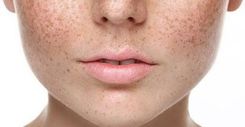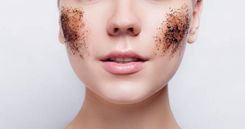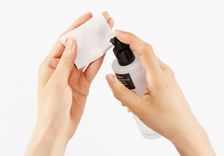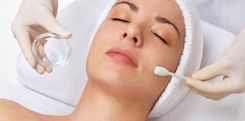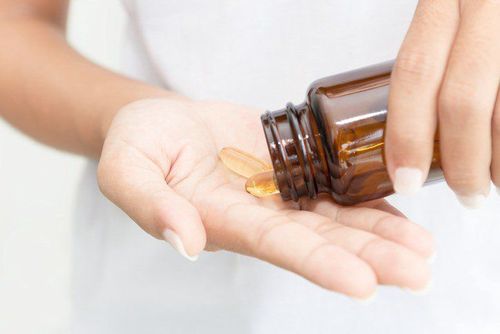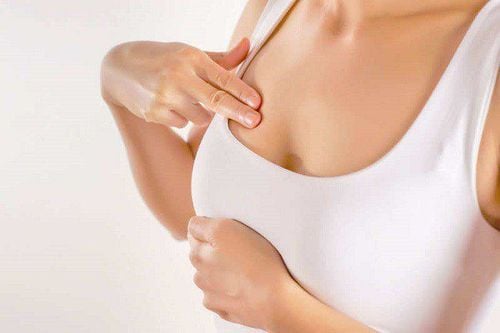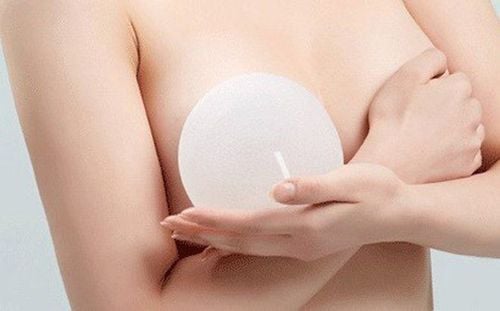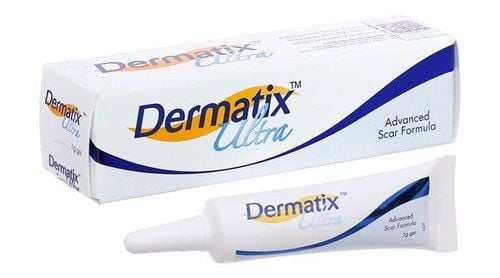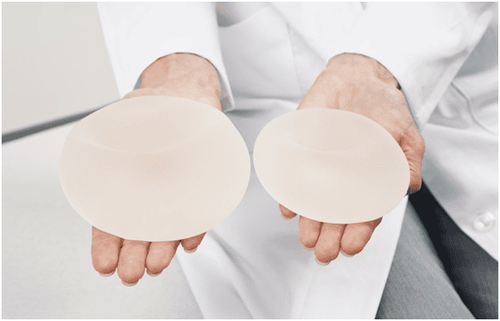This is an automatically translated article.
After the implant is placed, fibrous scar tissue will form around it, creating a tissue cyst. The body forms a protective sheath like this around any objects it recognizes as foreign. Tissue cysts are usually soft or slightly firm, unnoticeable, and help hold the implant in place. In some women, a cyst forms abnormally hard and dense. The capsule tightens around and squeezes the implant. This condition, called capsular contracture, can cause chronic pain and deformity of the breast, and it can cause the breasts to protrude higher above the breasts.
1. What is capsular contracture?
Capsular contracture is the formation of a scar tissue "cyst" around the breast tissue after the implant is inserted. The body automatically reacts to any foreign object it detects inside it and tries to isolate that object by creating a barrier of scar tissue around it.
In the case of breast implants, this is usually a good thing the capsule helps keep the implant in place, preventing it from slipping. However, in some patients, this scar tissue cyst becomes abnormally stiff and begins to shrink around the implant. This can lead to cosmetic problems and in severe cases pain in the breasts.
2. Causes of capsular contracture after breast augmentation Clinicians have several theories about what causes capsular contracture and it is likely that the exact cause of this condition varies from patient to patient. . As a breast augmentation patient, it is important to understand that this condition is not caused by toxic or dangerous breast implants of any kind.
Saline implants contain only saline solution, which can be safely reabsorbed by the body with no adverse effects, and the silicone gel implants are made of medically inert silicone. Indeed, capsular contracture can occur after any type of medical implant is inserted; This condition is not unique to breast augmentation surgery.
Capsular contracture is particularly worrisome when it occurs after breast augmentation because it often changes the appearance of the breasts, thereby jeopardizing the cosmetic improvements that the patient has had surgery. Cystic contracture is usually not dangerous to a patient's health unless her implant ruptures (in the case of gel implants, rupture can sometimes lead to infection).
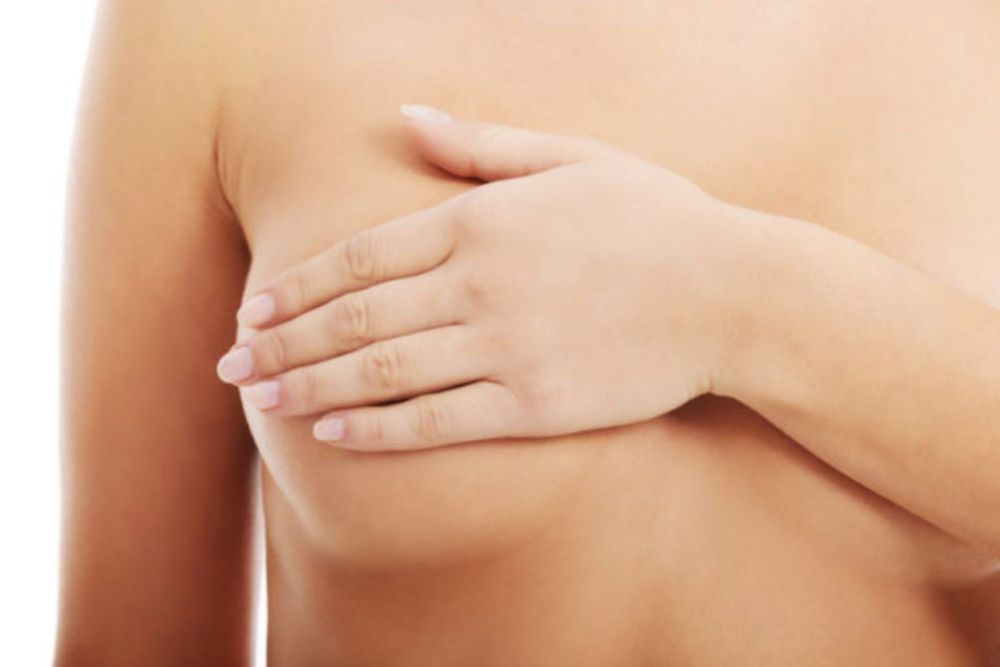
Co thắt bao xơ sau nâng ngực rất đáng lo ngại vì nó thường làm thay đổi diện mạo của ngực
3. Signs and symptoms of capsular contracture after breast augmentation Signs of capsular contracture after breast augmentation generally occur in both breasts of women after breast augmentation. After the capsule contracts around the breast implant, it contracts and hardens around the implant, making the implant hard to the touch. Here are the 4 stages of capsular contracture:
Stage 1: Asymptomatic grade 1 covert contracture (with or without symptoms). The formation of scar tissue around the implants does not affect the size, shape or texture of the breasts. Breasts look natural and remain soft to the touch. Stage 2: Second-degree capsular contracture usually presents with only minor cosmetic symptoms. The breasts are usually of a normal shape but feel slightly firm to the touch. Stage 3: Third degree capsular contracture presents with obvious cosmetic symptoms. The breasts will be hard to the touch and appear irregular, for example they will be too round, hard looking and the nipples may be misshapen. However, this degree of spasm usually doesn't cause much pain (if at all). Stage 4: Like third-degree capsular contracture, this stage causes the breast to become hard and deformed. Patients with fourth-degree constriction also have breast tenderness, whose breasts will often be tender and tender to the touch.
4. Treatment In the past, the treatment options available to breast augmentation patients with capsular contracture left much to be desired. Revision surgery is often a lengthy, expensive, and uncomfortable solution. During this procedure, the patient's implants are removed, treated with antibiotics, and finally (when the infection is in remission), the implant can be reimplanted. However, because this surgical approach leaves the body vulnerable to a second bacterial invasion, many of these patients have experienced recurrent cases of capsular contracture.
4.1. During capsular surgery, your surgeon removes the existing implant and surrounding tissue and inserts a new implant wrapped in a sheet of skin-based material (a skin substitute). mainly made of collagen). The skin's base material provides an extra layer of protection, and the body forms a new layer of scar tissue around it.
4.2. Open cystectomy During an open cystectomy, your plastic surgeon will attempt to cut open the cyst of tissue surrounding the implant by making small incisions and may also remove some of the capsule. follicle. The goal is for the capsule to open up, giving the implant more room to move around. In some cases, your surgeon will also remove your current implant and replace it with a new one.
4.3. Autologous reconstruction During autologous reconstruction, a plastic surgeon removes an implant and reconstructs your breast with a piece of tissue transplanted from another area of your body, such as your abdomen or buttocks. friend. An important advantage of this approach is that it eliminates the risk of recurrent capsular contracture, as capsular tissue will not form around a flap. However, autologous reconstruction is a more complex surgery with a longer recovery time than circumcision or open hysterectomy.

Phẫu thuật cắt bao xơ giúp điều trị tình trạng co thắt bao xơ sau nâng ngực
5. How to prevent capsular contracture after breast augmentation? While it is not possible to prevent capsular contracture from occurring in every patient, there are some ways to reduce a patient's risk of developing the condition. To that end, plastic surgeons now employ a number of different prevention strategies, as outlined below:
Thorough patient examination: Patients are screened for possible health conditions. may increase the risk of complications such as hematoma. Patients are also asked to give up smoking, as smoking makes it easier for hematomas to form and generally interferes with the healing process. Use the right implant size for the patient: Placing large implants in patients who do not have enough natural breast tissue to cover the aforementioned implants increases the risk of capsular contracture. If a patient with small breasts wants to increase their bust size significantly, it is better to do it in stages, e.g. starting with medium-sized implants and giving the skin time to relax before large rings are inserted. than. Minimal Treatment of Implants: The more treatment an implant is treated before it is inserted into the patient's breast, the higher the chance of bacterial contamination. As a result, surgeons strictly limit their touching of any implanted device before placing it in the patient's body. Board-certified plastic surgeons also work in a sterile hospital facility. Use of textured gel implants: The use of textured, rather than smooth, gel implants has been shown to reduce capsule shrinkage. It is thought that the textured surface of the implant makes it harder for thick callus around the implant to develop. However, textured implants are not suitable for every patient, as in some cases their edges may be easier to detect. They are usually best suited to use when the implant is placed below the pectoral muscle. Using the "submuscular" method: Placing an implant under the pectoral muscle can significantly reduce the risk of capsular contracture. A fraction below the muscle implant site leads to an 8-12% lifetime risk of capsular contracture, as opposed to a 12-18% lifetime risk of spasticity with muscle implant placement. Furthermore, implants placed entirely under the muscle had only a 4-8% lifetime risk of spasticity. Massage: Gently massaging your breasts while they heal after breast augmentation surgery can help prevent stomach cramps by encouraging the breast tissue to stay supple. However, this method has not been proven effective by any large studies. You should never tamper with the tissues of the breast as they heal after surgery without prior permission from your surgeon. Otherwise, you could damage the tissue and make the holster more susceptible to contracting.
Please dial HOTLINE for more information or register for an appointment HERE. Download MyVinmec app to make appointments faster and to manage your bookings easily.
